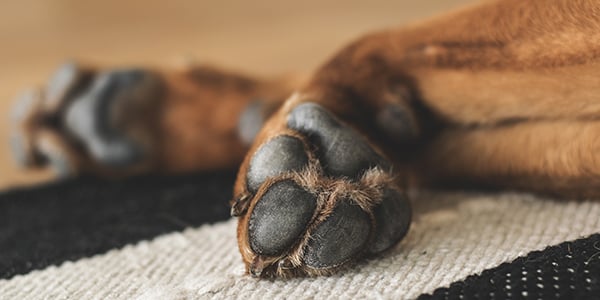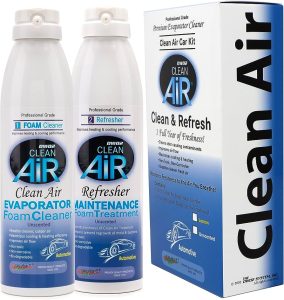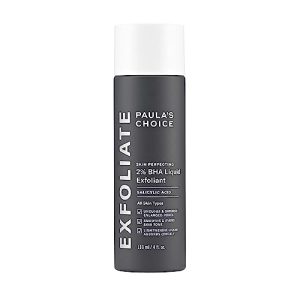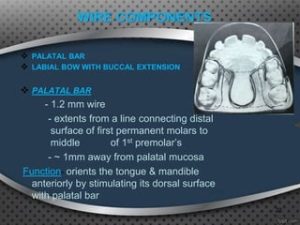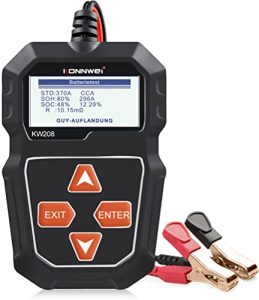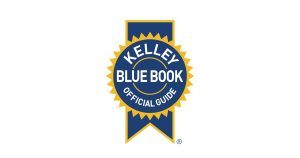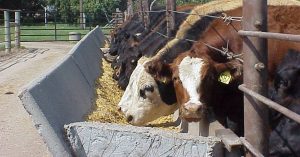Contents
- Identify Potential Dangers Your Dog’S Paws May Face
- Explore Different Options For Paw Protection
- Discover Natural And Homemade Solutions For Paw Care
- Create A Regular Maintenance Plan For Healthy Paw Pads
- Keep Your Dog’S Paws Safe During Outdoor Adventures
- Understand Signs And Symptoms Of Paw Pad Problems
- Learn When Professional Intervention Is Necessary
- Frequently Asked Questions Of Dog Paw Pad Protection
- Conclusion
Dog paw pad protection is essential for preventing injuries and maintaining their overall health and comfort. Regular use of paw balms, boots, and paw wax can help protect their paws from hot pavement, cold weather, chemicals, and rough terrains, ensuring optimal paw health.
As a pet owner, you understand the importance of keeping your furry friend safe and healthy. One often overlooked aspect of their well-being is their paw pad protection. Dog paw pads are sensitive and can be easily injured by various factors such as hot pavement, cold weather, chemicals, and rough terrain.
Therefore, it becomes crucial to provide them with the necessary protection to prevent any injuries and ensure their comfort. We will discuss the importance of dog paw pad protection and provide you with some effective methods like paw balms, boots, and paw wax to keep their paws safe and healthy. By taking simple preventative measures, you can give your dog the best paw pad protection possible.
Identify Potential Dangers Your Dog’S Paws May Face
Protect your dog’s paws by identifying potential dangers they may encounter, such as hot pavement, sharp objects, or harsh weather conditions. Keep their paw pads safe with proper care and protection.
Dog Paw Pad Protection
When it comes to keeping our furry friends safe and happy, ensuring the health of their precious paws is crucial. Dogs rely heavily on their paws for various activities, from walking and running to playing and exploring. However, these adorable paw pads are susceptible to potential dangers that can cause discomfort or even injury.
In this section, we will identify three common hazards that your dog’s paws may face and discuss how to protect them. So, let’s dive in and explore the importance of safeguarding your furry companion’s paws!
Hot Pavement And Asphalt
Summers can be scorching, and the pavement and asphalt absorb a significant amount of heat, potentially causing discomfort and burns to your dog’s paw pads. Here are some points to consider when dealing with hot surfaces:
- Hot pavement can reach temperatures that can burn your dog’s paws. In extreme cases, it may even lead to blistering and severe injuries.
- Avoid walking your dog on hot pavement during peak hours when the temperature is at its highest. Early mornings or late evenings are ideal times for a stroll.
- Before heading out, touch the pavement with your hand. If it feels hot, it’s likely uncomfortable for your dog. Opt for shady areas or walk on grass instead.
- Protect your dog’s paws by using protective booties or applying petroleum jelly on their pads to provide a barrier.
Icy And Cold Surfaces
Cold weather conditions can also pose a threat to your four-legged companion’s paws. Let’s take a look at the dangers associated with icy and cold surfaces:
- When walking on icy surfaces, your dog’s paws can suffer from frostbite. This occurs when the tissues freeze due to prolonged exposure to extremely cold temperatures.
- Antifreeze, often used during winter months, is highly toxic to dogs if ingested. Be cautious and avoid areas where this chemical may have been used.
- Apply dog-friendly paw balm or a thin layer of coconut oil on your dog’s paw pads before heading out to protect them from the cold.
- Consider using dog boots for added insulation and protection during extremely cold weather.
Rough Terrain And Sharp Objects
Being adventurous creatures, dogs love to explore various terrains. However, this curiosity can lead to unexpected encounters with rough surfaces and sharp objects. Here’s what you should keep in mind:
- Uneven or rough terrain, such as rocky paths or jagged surfaces, can cause abrasions or cuts to your dog’s delicate paw pads.
- Watch out for discarded objects like broken glass, metal shards, or sharp rocks that can puncture or injure your dog’s paws.
- Regularly inspect and clean your dog’s paws after outdoor excursions, removing any debris or foreign objects that may have gotten stuck.
- Using protective boots designed for rugged terrains can minimize the risk of paw injuries and keep your dog’s paws safe.
By being proactive and taking necessary precautions, you can ensure that your furry friend’s paw pads remain strong, healthy, and protected. Remember, happy paws equal a happy pup!
Explore Different Options For Paw Protection
Explore numerous options to safeguard your dog’s precious paw pads from harsh conditions, by using protective boots, balms, or even paw wax. Choose the best solution for your furry friend to ensure their paws stay safe and sound.
Dog Boots And Booties:
- Dog boots and booties are a popular choice for paw protection, especially in extreme weather conditions or rough terrains.
- They are designed to shield your dog’s paws from hot surfaces, cold weather, sharp objects, and chemicals.
- These boots are typically made of durable materials like rubber or neoprene, providing insulation and traction.
- The adjustable straps help secure the boots on your dog’s paws, ensuring a snug fit.
- Some boots even have additional features like reflective strips for visibility during nighttime walks.
Paw Wax And Balms:
- Paw wax and balms are an excellent alternative for paw protection, especially for dogs who find boots uncomfortable.
- These products create a protective barrier on the paw pads, shielding them from rough surfaces and extreme temperatures.
- Paw wax usually contains natural ingredients like beeswax, shea butter, and essential oils to moisturize and soothe the paws.
- It forms a semi-permeable layer that allows the paws to breathe while still offering protection.
- Balms are often preferred for healing dry or cracked paw pads, as they provide intensive moisturization and nourishment.
Protective Socks And Wraps:
- Protective socks and wraps offer an additional layer of defense for your dog’s paws.
- Socks are made of durable materials like cotton or nylon, providing cushioning and protection against friction and irritation.
- These socks often have skid-resistant soles to prevent slipping on slippery surfaces.
- Wraps, on the other hand, are elastic bandages that can be wrapped around the paw pads for added support and protection.
- They are commonly used during outdoor activities or for dogs recovering from paw injuries.
Using the right paw protection option for your dog depends on their specific needs and preferences. Whether it’s dog boots for harsh conditions, paw wax for everyday use, or protective socks for added cushioning, these options help keep your dog’s paws safe and comfortable.
Be sure to choose a product that fits well and suits your dog’s activity level. Regular inspection and care for your dog’s paw pads are essential to maintain their overall paw health.
Discover Natural And Homemade Solutions For Paw Care
Discover natural and homemade solutions to protect your dog’s paw pads from discomfort with these easy-to-implement methods.
Homemade Paw Balm Recipes
- Coconut oil: Apply a thin layer of coconut oil on your furry friend’s paw pads. It acts as a natural moisturizer and can help soothe dryness and cracking.
- Shea butter and beeswax: Create a homemade balm by melting shea butter and beeswax together. This combination provides a protective barrier and locks in moisture.
- Olive oil and vitamin E: Mix olive oil and vitamin E oil to make a nourishing paw balm. This combination helps to soften and heal dry and cracked paws.
Natural Moisturizers For Dry Paw Pads
- Aloe vera gel: Apply pure aloe vera gel, which has cooling and moisturizing properties, to your dog’s paw pads. It can help reduce inflammation and soothe any discomfort.
- Vitamin E oil: Massage a few drops of vitamin E oil onto your dog’s paw pads to moisturize and promote healing. It also acts as an antioxidant, protecting the paws from free radicals.
- Almond oil: Gently rub a small amount of almond oil onto your dog’s paw pads. Almond oil is rich in vitamins and minerals that promote healthy skin and hydrate dry paw pads.
Herbal Foot Soaks For Soothing Irritation
- Chamomile tea soak: Brew a strong cup of chamomile tea and let it cool down. Dip your dog’s paws into the soothing liquid for a few minutes. Chamomile has anti-inflammatory properties and can help alleviate irritation and itching.
- Epsom salt soak: Fill a basin with warm water and dissolve a tablespoon of Epsom salt. Soak your canine companion’s paws for about 10 minutes. Epsom salt can reduce inflammation and relieve discomfort.
- Calendula oil soak: Add a few drops of calendula oil to warm water and let your dog’s paws soak in it for a few minutes. Calendula has healing properties that can help soothe irritations and promote healthy paw pads.
Remember, using natural and homemade solutions for paw care can be effective and safe for your furry friend. However, always consult with your veterinarian before trying any new remedies to ensure they are suitable for your dog’s specific needs.
Create A Regular Maintenance Plan For Healthy Paw Pads
Create a maintenance plan for healthy dog paw pads to protect them from injuries and infections. Regular care and attention can prevent cracking and keep your furry friend’s paws in top condition for their daily adventures.
Proper care and maintenance of your dog’s paw pads are essential for their overall health and well-being. By implementing a regular maintenance plan, you can ensure that your furry friend’s paws stay healthy and protected. Here are some key steps to include in your paw pad care routine:
Regular Paw Inspections And Cleaning:
- Thoroughly examine your dog’s paw pads on a regular basis to check for any signs of damage, irritation, or foreign objects.
- Gently remove any debris, dirt, or mud from the paw pads using a soft cloth or pet-safe wipes.
- Pay attention to any redness, swelling, or excessive licking, as these may indicate an underlying issue that requires further attention.
- Regularly clean your dog’s paws after walks or outdoor activities to prevent the accumulation of harmful substances or chemicals.
Trimming Of Overgrown Nails:
- Overgrown nails can cause discomfort and affect your dog’s ability to walk properly, which can also lead to paw pad problems.
- Trim your dog’s nails regularly using a proper pet nail trimmer or seek assistance from a professional groomer if needed.
- Be cautious not to trim the nails too short, as it may cause bleeding or pain. Familiarize yourself with the correct technique or consult a veterinarian for guidance.
Moisturizing And Conditioning Routines:
- The paw pads are subjected to various environmental conditions, including hot pavement or cold snow, which can lead to dryness and cracking.
- Apply a paw balm or moisturizing solution specifically designed for dogs to keep the paw pads hydrated and supple.
- Consider using a conditioning routine that includes natural ingredients such as shea butter or coconut oil to nourish and protect the paw pads.
- Regularly massage the moisturizer or balm into the paw pads, paying extra attention to areas prone to dryness.
By implementing these simple yet effective steps into your dog’s routine, you can ensure that their paw pads remain healthy, protected, and ready for any adventure that comes their way.
Remember, a proactive approach to paw pad care is the key to preventing discomfort, potential injuries, and the need for costly treatments down the line. Your furry friend will thank you for the extra care and attention given to their precious paws!
Keep Your Dog’S Paws Safe During Outdoor Adventures
Safeguard your furry pal’s paws from potential harm during outdoor expeditions with proper dog paw pad protection.
When it comes to taking your dog on outdoor adventures, it’s important to prioritize their safety. Your furry friend’s paws are a vital part of their mobility, and protecting them is crucial to ensuring a happy and healthy outdoor experience.
Here are some essential tips to keep your dog’s paws safe during your outdoor adventures:
Choosing Safe Walking Surfaces
- Opt for grassy areas, dirt paths, or sand whenever possible. These surfaces provide better traction and are gentle on your dog’s paws.
- Avoid walking your dog on hot pavement or asphalt. These surfaces can heat up quickly, potentially causing burns and discomfort.
- Look out for sharp objects such as broken glass, rocks, or debris that could injure your dog’s paw pads.
- Keep your dog away from areas treated with chemical fertilizers, pesticides, or ice-melting products, as these can irritate or harm their paws.
Proper Hydration And Rest Breaks
- Ensure your dog stays hydrated during outdoor activities by bringing along a collapsible water bowl and plenty of fresh water.
- Take frequent rest breaks, especially on longer hikes or during hot weather. This allows your dog to rest and give their paws a break from continuous walking or running.
Protective Measures In Extreme Weather Conditions
- In hot weather, consider using dog booties or applying paw balm to protect your dog’s paws from hot surfaces like sand or pavement.
- During cold weather, protect your dog’s paws from ice, snow, and salt by using dog booties or applying a protective wax on their paw pads.
- Be cautious of frostbite in extremely cold temperatures. If your dog shows signs of discomfort, such as lifting their paws or licking excessively, head indoors immediately and warm their paws gently.
Remember, your furry friend relies on their paws for all sorts of outdoor activities. By following these tips and using protective measures, you can ensure your dog’s paws stay safe and healthy during your outdoor adventures.
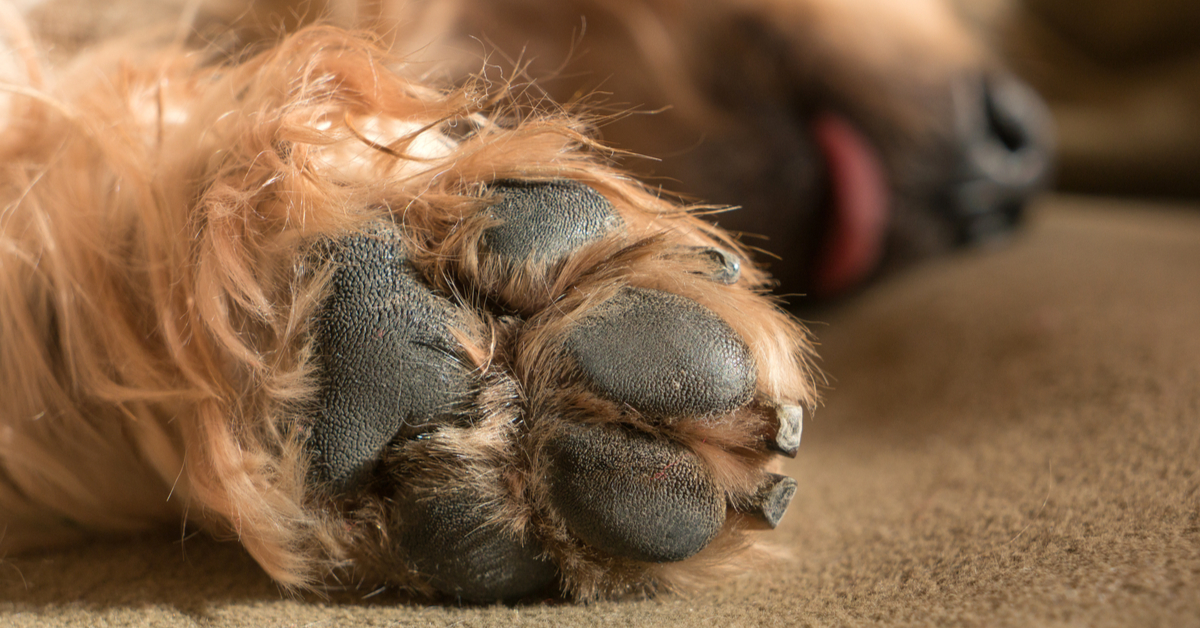
Credit: outwardhound.com
Understand Signs And Symptoms Of Paw Pad Problems
Protect your dog’s paw pads by understanding the signs and symptoms of paw pad problems. Ensure their well-being by staying aware of any issues that may arise.
:
Caring for your dog’s paw pads is vital to their overall health and well-being. By understanding the signs and symptoms of paw pad problems, you can provide timely care and prevent further complications. Here are some common issues to be aware of:
Cuts, Abrasions, And Blisters:
- Cuts on the paw pads can occur due to sharp objects or rough surfaces. They may cause bleeding and pain.
- Abrasions are superficial scrapes that can result from excessive running or walking on abrasive surfaces.
- Blisters can form from excessive friction or burns, often appearing as raised fluid-filled patches.
Paw Pad Infections:
- Bacterial or fungal infections can affect the paw pads, causing redness, swelling, and discomfort.
- Dogs with weakened immune systems or those living in unsanitary conditions are more susceptible to infections.
- Paw pad infections may have a foul odor and can worsen if left untreated.
Allergies And Dermatitis:
- Allergies can result in paw pad inflammation, itching, and redness.
- Contact dermatitis can occur when the paw pads come into contact with irritants or allergens such as chemicals or certain plants.
- Allergic dermatitis can cause excessive licking, chewing, or scratching of the paw pads.
Regularly inspecting your dog’s paw pads can help you identify any signs of problems early on. Prompt attention and proper care can prevent further complications and help your furry friend stay comfortable and active.
Learn When Professional Intervention Is Necessary
Dog paw pad protection is essential for keeping pets safe and comfortable. Learn to recognize when professional intervention is needed to address any potential issues that may arise.
**Dog Paw Pad Protection: **
We all want to keep our furry friends safe and healthy, especially when it comes to their precious paws. While minor scratches or incisions on your dog’s paw pads can often be treated at home, certain situations may require professional intervention.
In this section, we will discuss the signs to look out for that indicate it’s time to seek professional help.
Persistent Lameness Or Limping:
- If your dog continues to experience lameness or limping even after a few days of rest, it’s essential to consult a veterinarian. This could indicate a more serious underlying issue that requires medical attention.
- Professional intervention is necessary when lameness is accompanied by swelling, heat, or tenderness around the paw pad. These symptoms may indicate an infection or other complications that need prompt treatment.
- A veterinarian can perform a thorough examination of your dog’s paw, including assessing joint range of motion, to determine the cause of the persistent lameness or limping.
Excessive Bleeding Or Seepage:
- If your dog’s paw pad is bleeding excessively and the bleeding doesn’t seem to stop even with immediate first aid measures, it’s crucial to seek professional help.
- Similarly, if there is persistent seepage of fluid or discharge from the wound, professional intervention may be necessary. This could be a sign of infection or a more severe injury that requires medical treatment.
- A veterinarian can provide the right medical care, including proper wound cleaning, bandaging techniques, and potentially medications to prevent infection or aid in healing.
Signs Of Infection Or Worsening Condition:
- If you notice any signs of infection such as pus, foul odor, or redness around the wound, it’s important to have your dog examined by a veterinarian. Infections in the paw pads can quickly worsen and may require antibiotics or other specific treatments.
- Watch out for any worsening of your dog’s condition despite appropriate home care. This may include increasing pain, swelling, or difficulty walking.
- Seeking professional intervention promptly will allow for a comprehensive examination and targeted treatment to prevent further complications.
Remember that your dog’s paw pad protection is crucial for their overall well-being. While most minor injuries can be handled at home, it’s essential to recognize the signs that indicate professional intervention is necessary. By seeking veterinary care when needed, you can ensure your furry friend receives the best possible treatment for a quick and efficient recovery.
Frequently Asked Questions Of Dog Paw Pad Protection
Should Dogs Wear Paw Protectors?
Yes, dogs should wear paw protectors. Paw protectors help shield their paws from various hazards like hot pavement, sharp objects, and chemicals. They also provide extra traction on slippery surfaces. By using paw protectors, dogs are less likely to get injured or experience discomfort during outdoor activities.
These protectors are especially important for dogs with sensitive or injured paws. They help prevent cuts, burns, and paw pad damage. Paw protectors are available in various sizes and styles to ensure a proper fit for each dog. It is essential to choose high-quality protectors that are comfortable and breathable.
Regularly check the protectors for wear and tear and replace them as needed. Overall, paw protectors are a beneficial accessory that promotes the well-being and safety of our canine companions.
What Can You Put On Dogs Paws To Protect Them?
To protect your dog’s paws, apply a pet-safe paw balm or wax regularly.
How Do You Protect A Dog’S Paw From A Wound?
To protect a dog’s paw from a wound, you can follow these steps. First, inspect the paw for any cuts or abrasions. Clean the wound gently with an antiseptic solution recommended by a veterinarian. Next, apply an antibiotic ointment to prevent infection.
Cover the area with a breathable bandage or a dog boot to keep dirt and debris away. Ensure the bandage is snug but not too tight. Check the paw regularly for any signs of swelling, redness, or discharge. Change the bandage as needed, ensuring the wound remains clean and dry.
Lastly, restrict your dog’s activity level to prevent further injury and promote healing. Consult a veterinarian if the wound does not improve or if your dog shows signs of discomfort. Remember to prioritize your dog’s well-being and seek professional advice when necessary.
What Is The Best Dog Paw Pad Protector?
The best dog paw pad protector is a product designed to protect your dog’s paws from injuries and harsh conditions. It creates a barrier between their paws and the ground, reducing the risk of cuts, burns, and irritation. These protectors are typically made of durable materials like rubber or neoprene, which provide traction and insulation.
Look for protectors that are waterproof, breathable, and easy to clean. They should also have adjustable straps to ensure a secure fit. It’s important to measure your dog’s paw size before purchasing to ensure the protector fits properly. Regularly check the condition of the protectors and replace them if they become damaged.
Remember to gradually introduce your dog to wearing paw protectors to allow for adjustment. Keep your furry friend’s paws safe and comfortable with a reliable paw pad protector.
Conclusion
Protecting your dog’s paw pads is essential to ensuring their overall health and well-being. By taking proactive measures, such as regularly inspecting paw pads for any signs of damage and providing appropriate protection, you can prevent potential injuries and discomfort.
Choosing the right paw pad protection, such as boots or balms, can help safeguard against harsh weather conditions, hot surfaces, and rough terrain. Additionally, maintaining proper grooming and hygiene practices, as well as providing a balanced diet and regular exercise, can contribute to the overall health and strength of your dog’s paw pads.
Remember to consult with your veterinarian for specific advice tailored to your dog’s needs. By prioritizing paw pad protection, you’re not only improving your dog’s quality of life but also ensuring they can continue to explore the world with confidence and comfort.
Let your furry friend’s paws do the talking – keep them safe and sound with proper care and attention.

